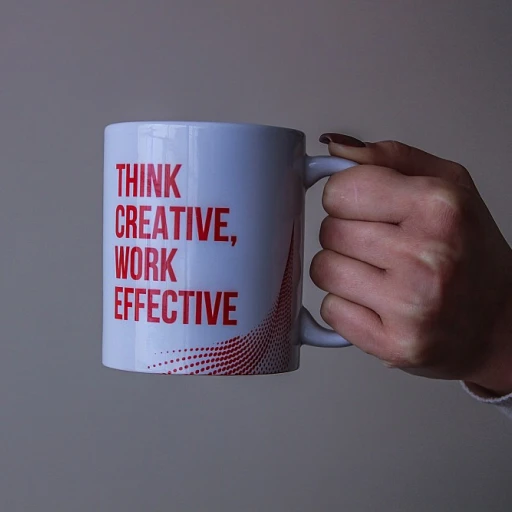
The Role of Sponsorship in Corporate Culture
How Sponsorship Shapes Corporate Culture
Sponsorship plays a pivotal role in the fabric of corporate culture. It is an essential tool that helps organizations foster a collaborative environment while maximizing success in various events. Whether it’s an annual conference, a nonprofit sponsorship, or a specific event sponsorship, understanding the impact of sponsorship on company dynamics is key.
Beyond financial contributions, these partnerships allow businesses to expand their reach and demonstrate commitment to shared values. By engaging in sponsorships, companies not only gain increased visibility through sponsor logos prominently placed on marketing materials and social media channels, but they also enhance their reputation and credibility within their industry.
The selection of suitable sponsorship packages and levels, such as sponsorship tiers or sponsorship levels, can influence the degree of engagement and recognition a company receives. The strategic choice of sponsorship level allows for tailored opportunities that align with corporate objectives, offering benefits that extend well beyond the event itself.
Companies often seek potential sponsors to achieve synergy in mission and vision, thereby creating a mutually beneficial relationship. The right sponsorship model empowers companies to effectively build brand awareness and connect with stakeholders in meaningful ways.
For organizations striving to cultivate an agile corporate culture, embracing well-structured sponsorships offers pathways to accelerated innovation and growth. To learn more about how companies are adapting to increase flexibility and responsiveness, explore the integration of agile practices in corporate culture.
Identifying the Levels of Sponsorship
Recognizing the Various Sponsorship Tiers
In the realm of corporate culture, understanding the different levels of sponsorship is crucial for both sponsors and organizations. Each sponsorship level comes with its own set of benefits and responsibilities, influencing the dynamics between the sponsor and the company. Typically, sponsorships are organized into tiers, each offering distinct sponsorship packages that provide varying degrees of exposure and recognition.
Companies often categorize their sponsorship tiers into basic, mid-level, and premium packages. These classifications are not only easy to comprehend but also offer potential sponsors clear expectations regarding their investments. Here's a brief overview of common sponsorship levels:
- Basic Sponsorship: Often provides limited access to events and minor logo placements on promotional materials. This tier is suitable for companies looking for cost-effective ways to support an event while gaining visibility.
- Mid-Level Sponsorship: Offers more comprehensive benefits, including prominent logo displays on event materials, mentions in social media campaigns, and opportunities for engagement during events.
- Premium Sponsorship: Grants extensive rights, such as exclusive sponsorship packages, premium logo placement, and significant recognition throughout events. This tier is ideal for companies aiming for maximum impact and visibility in accordance with their strategic objectives.
Organizations, especially nonprofits, can leverage these sponsorship levels to attract potential sponsors by offering tailored packages that meet sponsors’ strategic goals. As companies explore these variations, they can find the best fit that aligns with their larger corporate strategy. For further insights into corporate culture structures, consider exploring what defines the four corporate cultures in modern business environments.
Benefits of Effective Sponsorship
Real Gains from Strategic Sponsorships
The implementation of strategic sponsorship within corporate events like an annual conference or nonprofit endeavors is more than just the transactional nature of sponsors providing funds and receiving a logo placement in return. The benefits of engaging in effective sponsorship extend well beyond the surface level of logo display and recognition. Firstly, one of the key advantages sponsors will experience is increased brand exposure. When a sponsor’s logo is displayed in high-traffic areas like event backdrops, sponsorship packages, and social media promotions, it significantly boosts visibility. This exposure enhances brand recall among attendees, creating a lasting impression that may convert event participants into potential customers. Effective sponsorship also creates valuable networking opportunities. Sponsors engaging at various levels of sponsorship will have the chance to connect with key stakeholders, industry peers, and potential clients in a more informal setting. This connection can lead to the formation of strategic partnerships and business growth opportunities that last well beyond the event itself. Companies investing in sponsorships benefit from an aligned brand image and enhanced credibility. By associating themselves with reputable events or nonprofit sponsorships that align with their corporate values, sponsors fortify their brand's integrity and appeal to value-driven consumers. This alignment reinforces trust and presents the company in a reputable light. Moreover, sponsors at higher tier levels often enjoy exclusive access to perks such as speaking opportunities, dedicated space for promotional materials, and specialized recognition during events. Such opportunities facilitate a deeper engagement with target audiences and ensure that the sponsor's message resonates more effectively. Event sponsorship packages also typically come with post-event evaluations that give sponsors feedback on what worked and how to improve their strategies. This intelligence gathering is invaluable for refining future sponsorship packages and maximizing returns on investment. In essence, by selecting tailored sponsorship levels and strategically engaging with appropriate sponsorship tiers, companies can drive not only brand growth but also establish themselves as leading figures within their industries. For more insights into the methodologies that shape effective sponsorships and how they truly elevate organizational synergies, you might consider exploring this deep dive into source to pay vs procure to pay.Challenges in Implementing Sponsorship
Barriers and Hurdles in Establishing Sponsorship Structures
When it comes to embedding sponsorship in corporate culture, several challenges can impede progress. Understanding these hurdles can better prepare companies to develop effective sponsorship programs. Here’s a look at some common obstacles.
- Identifying Appropriate Sponsorship Levels: One of the initial challenges is determining suitable sponsorship levels and packages. This requires a clear understanding of the company’s objectives, event costs, and potential sponsor benefits. Companies often struggle to balance between offering appealing packages and maintaining brand value.
- Engaging the Right Sponsors: Establishing connections with potential sponsors who align with the company values can be daunting. Event sponsors should reflect the company’s image and goals, but attracting such sponsors demands strategic outreach and solid networking.
- Internal Buy-In: Gaining internal support for sponsorship initiatives can be difficult. Teams may have differing perspectives on sponsorship’s importance, and budget constraints can lead to a tug-of-war over resource allocation.
- Implementing Effective Recognition: While recognition is a critical part of sponsorship, determining the most effective forms of acknowledgment, like logo placement or social media mentions, can be challenging. Sponsors expect value for their investment, and failure to meet these expectations could harm future opportunities.
- Monitoring and Measuring Success: Evaluating the success of sponsorship efforts can be complex. Metrics should be established to assess the impact of sponsorship levels on brand visibility, customer engagement, and revenue growth.
Each of these challenges has implications on how a company structures its sponsorship programs. By addressing these obstacles, organizations can enhance sponsorship effectiveness and realize the associated benefits previously explored. A resilient sponsorship strategy not only supports events like annual conferences but also fosters long-term partnerships, offering mutual benefits to sponsors and the company alike.
Case Studies of Successful Sponsorship Models
Successful Sponsorship Models: Real-World Examples
Understanding how sponsorship can be effectively integrated into corporate culture is crucial for companies aiming to leverage these partnerships. Here, we explore some successful sponsorship models that have set benchmarks in the industry.
Nonprofit Partnerships: Building Community and Brand
One notable example is the collaboration between a major tech company and a nonprofit organization focused on education. This partnership involved multiple sponsorship levels, allowing the company to have its logo displayed prominently at various events, including an annual conference. The tech company offered different sponsorship packages, each providing unique benefits and opportunities for recognition. This model not only enhanced the nonprofit's reach but also aligned the company with a socially responsible cause, boosting its brand image.
Event Sponsorship: Maximizing Exposure and Engagement
Another successful model is seen in the sports industry, where a global beverage brand sponsors a series of high-profile events. By offering tiered sponsorship packages, the brand ensures its logo placement is strategic, maximizing visibility across social media and other platforms. Event sponsors benefit from the extensive exposure, while the events themselves gain credibility and financial support. This approach highlights the importance of aligning sponsorship levels with the company's marketing goals.
Corporate Conferences: Elevating Brand Authority
In the corporate sector, a financial services company has effectively used sponsorship to enhance its annual conference. By creating exclusive sponsorship tiers, the company attracts potential sponsors who are eager to associate with a prestigious event. Sponsors will receive recognition through various channels, including the company's website and post-event materials. This model not only provides financial backing but also elevates the conference's status, attracting more attendees and media attention.
These case studies demonstrate the diverse ways sponsorship can be leveraged to benefit both the sponsor and the sponsored entity. By carefully selecting sponsorship levels and packages, companies can create mutually beneficial relationships that enhance their corporate culture and brand reputation.
Strategies for Enhancing Sponsorship Levels
Enhancing Your Sponsorship Potentials
The process of bolstering your sponsorship levels can significantly transform the value proposition for both your company and potential sponsors. Harnessing strategies that elevate your sponsorship packages and tiers is not just about boosting visibility but also about nurturing long-term partnerships. Here are some key strategies to consider:- Defining Clear Sponsorship Levels: Clearly outlined sponsorship levels help potential sponsors understand their benefits. These should include detailed descriptions of logo placement opportunities, event inclusion, and post-event recognitions. Multiple tiers allow for flexible engagement based on the sponsors' investment capacity.
- Tailoring Sponsorship Packages: Whether it’s an annual conference or periodic events, customize sponsorship packages to include perquisites such as prominent company logo displays on social media and websites. Tailored packages align with sponsors’ business goals and expectations, leading to more meaningful partnerships.
- Offering Diverse Engagement Opportunities: Integrating non-traditional, innovative sponsorships like nonprofit sponsorship opportunities can attract a broader array of sponsors who value social responsibility. Structured events that promise networking and recognition amplify sponsors' desires to engage.
- Elevating Sponsor Recognition: Strategically planned recognition benefits, such as having logos prominently displayed or specific event sponsorship mentions, can significantly enhance the perceived value of sponsorships. Recognition is a compelling incentive for sponsors looking for consistent branding benefits.
- Monitoring and Adapting Sponsorship Efforts: Regular evaluation and adaptation of your sponsorship strategies are crucial. Seek feedback from event sponsors and modify your approach to meet emerging trends and expectations effectively.













